#Norman weber
Text
Sonderschau Schmuck: München vom 28. 02. bis 03.03.2024
Nähnadel und Deoroller, Menschenhaar und Künstliche Intelligenz: Im zeitgenössischen Autorenschmuck ist alles möglich. Die Sonderschau SCHMUCK auf der «Handwerk & Design» versammelt die neuesten Arbeiten von Schmuckkünstlerinnen und Schmuckkünstlern aus der ganzen Welt. Sie ist die wichtigste Ausstellung für zeitgenössische Schmuckkunst weltweit. Die kommende SCHMUCK findet vom 28. Februar bis…

View On WordPress
#Goldschmied#Handwerk#Handwerk & Design#Handwerkskunst#Herbert Hofmann#Hermann Jünger#IHM#Julie Metzdorf#Kunst#Kunsthandwerk#Münchner Kunstakademie#Messe München#Norman weber#SCHMUCK 2024#Schmuckkunst#Silberschmied#sonderschau Schmuck
0 notes
Text

Movie Odyssey Retrospective
The Phantom of the Opera (1925)
By the time French journalist-turned-novelist Gaston Leroux published Le Fantôme de l'Opéra as a serial in 1909, he was best known for his detective fiction, deeply influenced by Sir Arthur Conan Doyle and Edgar Allan Poe. The Phantom of the Opera plays out like a Poe work – teeming with the macabre, painted with one character’s fanatic, violent lust. In serial form and, later, as a novel, Leroux’s work won praise across the West. One of the book’s many fans was Universal Pictures president Carl Laemmle who, on a 1922 trip to Paris, met with Leroux. While on the trip, he read Phantom (a copy gifted to him by Leroux) in a single night, and bought the film rights with a certain actor already in mind.
Laemmle’s first and only choice for the role of the Phantom was about to play Quasimodo in Universal’s 1923 adaptation of Victor Hugo’s The Hunchback of Notre Dame. That actor, Lon Chaney, had subsisted on bit roles and background parts since entering into a contract with Universal in 1912. Chaney, who was about to sign a contract with Metro-Goldwyn-Mayer (MGM), became an instant sensation the moment The Hunchback of Notre Dame hit theaters. Audiences and critics in the early 1920s were simultaneously horrified at the sight of his Quasimodo yet, crucially, felt a profound empathy towards the character.
In his prior films, as well as Hunchback, Chaney separated himself from his fellow bit actors with a skill that almost no other actor in Hollywood possessed: he was also a makeup artist. At this time, actors applied their own makeup – often simple cosmetics or unconvincing facial hair. None of the major Hollywood studios had makeup departments in the early 1920s, and it would not be until the 1940s that each studio had such a department. Chaney, the son of two deaf and mute adults, was also a master of physical acting, and could expertly use his hands and arms to empower a scene. Though already bound for MGM, Chaney could not possibly pass up the role of Erik, the Phantom. Despite frequent clashes with director Rupert Julian (1923’s Merry-Go-Round and 1930’s The Cat Creeps; despite being Universal’s most acclaimed director at this time, Julian was either sacked or walked away mid-production), Chaney’s performance alone earned him his place in cinematic history and, for this film, an iconic work of horror cinema and silent film.
As the film begins, we find ourselves at the Palais Garnier, home of the Paris Opera. The Opera’s management has resigned, turning over the Palais Garnier to new ownership. As the ink dries on the contract and as the previous owners depart, they warn about a Phantom of the Opera, who likes sitting in one of the box seats. Soon after, prima donna Carlotta (Virginia Pearson) receives a threatening letter from the Phantom. She must step aside and allow a chorus girl, Christine Daaé (Mary Philbin), sing the lead role in Charles Gounod’s Faust. If she refuses to comply, the Phantom promises something horrific. Aware of the letter, Christine the next day confers with her loved one, the Vicomte Raoul de Chagny (Norman Kerry), that she has been receiving musical guidance from a “Spirit of Music”, whom she has heard through the walls of her dressing room. Raoul laughs this off, but a series of murderous incidents at that evening’s production of Faust is no laughing matter. Christine eventually meets the shadowy musical genius of the Phantom, whose name is Erik (Chaney). In his subterranean lair, he professes his love to her – a love that will never die.
Rupert Julian’s The Phantom of the Opera also stars Arthur Edmund Carewe as the Inspector Ledoux (for fans of Andrew Lloyd Webber’s musical version, this is the Madame Giry character); Gibson Gowland as Simon Buquet; and John St. Polis as Raoul’s brother, the Comte Philippe de Chagny.
Before extoling this film, one has to single out Mary Philbin and Norman Kerry as the glaring underperformers in this adaptation. Philbin would become a much better actress than she displays here, if The Man Who Laughs (1928) is any indication. Yet, Philbin’s Christine is a blank slate, devoid of much personality and interest. It also does not help that Norman Kerry plays Raoul in a similar fashion. Raoul, in any adaptation of Phantom, tends to be a boring role. But goodness me, for a B-actor who was acclaimed for his tall, dark, and handsome looks and screen persona, he is a charisma vacuum here. During Kerry’s more intimate scenes with Philbin, you may notice that Kerry has a case of “roving hands” when he gets close with Philbin. Philbin, who could not visibly react to these moments on-camera, surreptitiously took Kerry’s hands and held them there to stop the touching.
Philbin is much better when sharing the screen opposite Chaney. Chaney and Philbin both could not stand director Rupert Julian – whom both actors, as well almost all of the crew, regarded as an imposing fraud who knew little about making art and more about how to cut costs (Laemmle appointed Julian for this film in part due to Julian’s reputation for delivering work under budget). There are unconfirmed accounts that after Julian’s departure or removal from Phantom, Chaney himself directed the remainder of the shoot aside from the final climactic chase scene (which was the uncredited Edward Sedgwick’s responsibility). In any case, Philbin’s terror when around Chaney was real. The sets of the Phantom’s lair reportedly spooked her – the subterranean waterways, his inner sanctum. Philbin also received no preparation before the filming of what is now one of the signature moments of the silent film era and all of horror cinema. Her reaction to Lon Chaney’s self-applied makeup – meant to appear half-skin, half-skeletal – was the first time that she saw Chaney’s Phantom in all his gruesomeness. Philbin, freed of the innocent, pedestrian dialogue of the film’s opening act, gifts to the camera one hell of a reaction, fully fitting within the bounds of silent film horror.
There are conflicting records on how Chaney achieved the Phantom’s final appearance. The descriptions forthcoming are the elements that freely-available scholarship generally accepts as true. It appears that Chaney utilized a skull cap to raise his forehead’s height, as well as marking deep pencil lines onto that cap to accentuate wrinkles and his brow. He also raised his cheekbones by stuffing cotton into his cheeks, as well as placing a set of stylized, decaying dentures. Inner-nasal wiring altered the angle of his nose, and white highlights across his face contributed to his skeletal look for the cameras. Cinematographer Charles Van Enger (1920's The Last of the Mohicans, uncredited on 1925's The Big Parade) – who, other than Chaney, was one of the most familiar onset with Chaney’s makeup – claimed that the nasal wiring sometimes led to significant bleeding. Taking inspiration from Chaney’s approach to keeping the makeup artistry hidden from Philbin and others, Universal kept the Phantom’s true appearance a secret from the public and press. The studio advised movie theaters to keep smelling salts ready, in case of audience members fainting during the unmasking scene. According to popular reporting at the time, audience members did scream and faint upon the reveal; a nine-year-old Gregory Peck’s first movie memory was being so terrified of Lon Chaney’s Phantom, that he asked to sleep with his grandmother that evening after he came home.
youtube
Lon Chaney’s tremendous performance allows The Phantom of the Opera to soar. Arguably, it is his career pinnacle. Masked or unmasked, Chaney’s Phantom dominates the frame at any moment he is onscreen aside from the film’s final chase sequence. Whether glowering over Christine, majestically gesturing in silhouette, strutting down the Opera House steps during the Bal Masqué, or tucked into the corner of the frame, Chaney’s physical presence draws the audience’s eyes to whatever he is doing. The differences in posture from before and after the unmasking scene are striking – from an elegant specter to a broken, hunched figure (appearing to draw some inspiration from his experience playing Quasimodo two years earlier) seething with pent-up carnality, rage, and sorrow. Chaney’s Phantom garners the audience’s sympathy when he gives Christine the grand tour of his chambers. Look at his posture and hands when he mentions, “That is where I sleep,” and, “If I am the Phantom, it is because man’s hatred has made me so.” That Chaney can ease through these transitions and transformations – as well as a third transformation, as the Red Death during the Bal Masqué – so naturally, without a misstep, is a testament to his acting ability.
Underneath the tortured and twisted visage of a man who has committed horrific acts is a vulnerable and misguided human being. His dreams, dashed and discarded by all others, have turned to despicable means. The role of the Phantom plays brilliantly to Chaney’s genius: to have audiences sympathize with even the most despicable or despondent characters he played. Chaney accomplishes this despite this film characterizing the Phantom with less sympathy than Leroux’s original novel and the popular Andrew Lloyd Webber musical.
This is already on top of Charles Van Enger’s camerawork; the sharp editing from a team including Edward Curtiss (1932’s Scarface) Maurice Pivar (1923’s The Hunchback of Notre Dame), Gilmore Walker (1927’s Uncle Tom’s Cabin), and Lois Weber.
Weber, who in 1916 was Universal’s highest-paid director, underwent numerous financial difficulties over that decade. One of Hollywood’s first true auteurs and largely ignored in the history of film until recently, Weber formed her own production company with Universal’s assistance in 1917, off the success of Shoes (1916). Through World War I, Weber’s movies were popular until around the turn of the decade, when her “didactic” filmmaking (a result of her devout Christian upbringing) went out of style. Most visibly among Weber’s financial failures of the early 1920s, The Blot (1921) – a movie that scholars and Weber himself considered her best – flopped in theaters. After two hiatuses from filmmaking in the early 1920s, Weber was brought in to conduct the final bits of editing on The Phantom of the Opera before returning to directing under Universal.
Though none of the film’s production designers were yet to hit their peak, The Phantom of the Opera benefitted from having a soon-to-be all-star art department including James Basevi (1944’s The Song of Bernadette), Cedric Gibbons (almost any and all MGM movies from 1925 onward), and Robert Florey (1932’s Murders in the Rue Morgue). Inspired by designs sketched by French art director Ben Carré, the production design trio spared no expense to bring Carré’s illustrations to life and used the entirety of Universal’s Soundstage 28 to construct all necessary interior sets. The set’s five tiers of seating and vast foyer needed to support several hundred extras. So unlike the customary wooden supports commonplace during the silent era for gargantuan sets, The Phantom of the Opera’s set for the Palais Garnier became the first film set ever to use steel supports planted into concrete. Basevi, Gibbons, and Florey’s work is glorious, with no special effects to supplement the visuals. The seventeen-minute Bal Masqué scene – which was shot in gorgeous two-strip Technicolor (the earliest form of Technicolor, which emphasized greens and reds) – is the most striking of all, unfurling its gaudy magnificence to heights rarely seen in cinema.
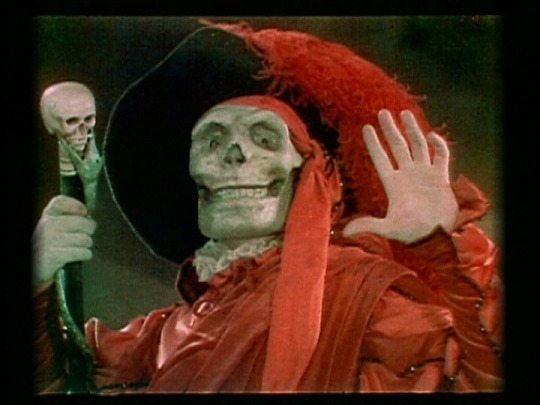
Universal’s Soundstage 28 was an integral part of the VIP tour at Universal Studios Hollywood for decades. Though the orchestra seats and the stage of the film’s Palais Garnier had long gone, the backside box seats of the auditorium remained. Stage 28 featured in numerous films after The Phantom of the Opera, including Dracula (1931), the Lon Chaney biopic Man of a Thousand Faces (1957), Psycho (1960), Charade (1963), Jurassic Park (1993), How the Grinch Stole Christmas (2000), and The Muppets (2011). The soundstage was also supposedly haunted, with individuals claiming to see a caped figure (Lon Chaney as the Phantom?) running around the catwalks, lights flickering on and off, and doors opening and closing on their own. In 2014, after standing for almost ninety years, Universal decided to demolish Stage 28 so as to expand its theme park. However, the historic set escaped the wrecking ball, as Universal decided to disassemble the set, place it into storage, and perhaps someday reassemble it. It is a fate far kinder than almost all other production design relics from the silent era.
Unlike what was coming out of Weimar Germany in the 1920s in the form of German Expressionism, American horror films had no template to follow when The Phantom of the Opera arrived in theaters. There would be no codification of American horror cinema’s tropes and sense of timing until the next decade. But without 1925’s The Phantom of the Opera, Universal would never become the house of horror it did in the 1930s through the early ‘50s (including the Dracula, Frankenstein, Mummy, Invisible Man, Wolf Man, and Creature from the Black Lagoon series). So, unbound by any unwritten guidelines, 1925’s The Phantom of the Opera – a horror film, but arguably also a melodrama with elements of horror – consumes the viewer with its chilling atmosphere and, from Lon Chaney, one of the best cinematic performances ever, without any qualification. For silent film novices, this is one of the best films to begin with (outside the comedies of Charlie Chaplin, Buster Keaton, and Harold Lloyd). Regardless of one’s familiarity with silent film, The Phantom of the Opera is a cinematic milestone.
My rating: 9.5/10
^ Based on my personal imdb rating. My interpretation of that ratings system can be found in the “Ratings system” page on my blog. Half-points are always rounded down.
For more of my reviews tagged “My Movie Odyssey”, check out the tag of the same name on my blog.
This is the twenty-third Movie Odyssey Retrospective. Movie Odyssey Retrospectives are reviews on films I had seen in their entirety before this blog’s creation or films I failed to give a full-length write-up to following the blog’s creation. Previous Retrospectives include Dracula (1931 English-language version), Oliver! (1968), and Peter Pan (1953).
#The Phantom of the Opera#Rupert Julian#Lon Chaney#Mary Philbin#Norman Kerry#Carl Laemmle#Gaston Leroux#Ernst Laemmle#Edward Sedgwick#Arthur Edmund Carewe#Gibson Gowland#Snitz Edwards#Virginia Pearson#Edward Curtiss#Maurice Pivar#Gilmore Walker#Lois Weber#silent film#TCM#My Movie Odyssey
6 notes
·
View notes
Text

Any Beatles fans out there, I urge you to listen to Erin and check out her fabulous work, if you're not already aware of her. She's analytical and level-headed, yet deeply empathetic. She's a much needed breath of fresh air in a male heavy fandom, many of whom have a bizarre love/hate fanship over Paul McCartney, emphasis on the hate. Indeed, some of them have written books about him.
#I'm looking at you Philip Norman you complete weirdo#Hunter Davies you're not much better after I saw your talk last year#The Beatles#Paul McCartney#Erin Torkelson Weber#one sweet dream podcast#The Beatles and the Historians#some interesting parallels with Liam and the way some Liam stans position Liam
3 notes
·
View notes
Text
So as you may know, I finished Tune In a few weeks ago. And then I dove into The Beatles and the Historians by Erin Torkelson Weber. And finishing both of those, while the AKOM series is still going, and having discussions here and in the discord, has been a really fortuitous sequence for myself, personally, and my understanding/exploration of Beatles history, bias, and the history of bias.
The thing I wanted to point out, to myself if no one else, is the reminder that while I think the current discussion around Lewisohn's (IMO) clear and present bias in his purportedly neutral biography is that Mark Lewisohn is a large part of the reason we know what we know about Paul McCartney.
I think we're all aware of the 70s-80s narrative promulgated by people like Philip Norman and Lennon himself that tucked McCartney (not to mention anyone else) conveniently out of the creative center of the Beatles (and post-Beatles) story. And I think I, like many, react to what I see in Tune In with that narrative in mind. That is to say, defensively, because we all know (now) that Paul brought in those tape loops, that Paul was exploring the avant garde, that Paul played a huge role in the Beatles creative development in the studio. So how do we know that, and what changed?
Well at least according to Weber, and I see no reason to distrust this, in large part that is due to Lewisohn's The Complete Beatles Recording Sessions and The Complete Beatles Chronicle. It was actually ML's research that uncovered a lot of the day by day, in studio and out doing that corrected this narrative. Of course, Paul began to correct this in the late 80s with his touring literature and then with Many Years From Now, but it's Mark's authority on the recordings and dates that gives that reassessment the factual basis it does. And I had kinda forgotten that.
Of course I'm not saying this changes my assessment of Tune In. But the reminder does reaffirm, for me anyway, that whatever is going on it's not like, a planned vendetta that's been going on for decades or anything. We don't have to take Paul's word for his attempt to correct the narrative in part because Lewisohn provided the evidence. And I simply think it's an interesting thing to hold in mind along with our questions about his research and writing choices.
#i've moved onto Truant Boy which is basically EXACTLY what I needed to read next#just by chance#love when synchronicity provides the best path#kris talks a lot#kris reads tune in#beatles books
33 notes
·
View notes
Text
Who voted to keep Santos in the House?
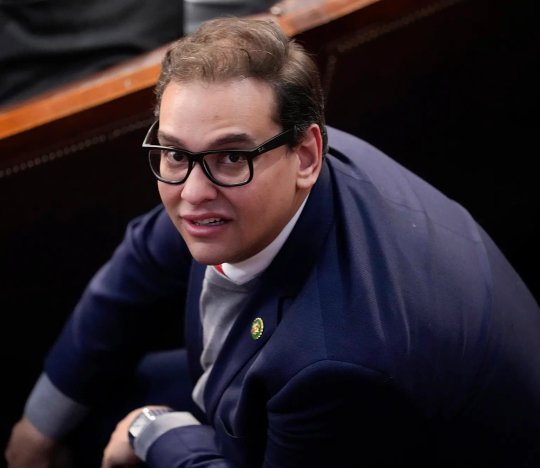
REPUBLICONS:
Alford, Missouri
Arrington, Texas
Babin, Texas
Baird, Indiana
Banks, Indiana
Bean, Florida
Biggs, Arizona
Bilirakis, Florida
Bishop, North Carolina
Boebert, Colorado
Bost, Illinois
Brecheen, Oklahoma
Buchanan, Florida
Burchett, Tennessee
Burlison, Missouri
Cammack, Florida
Carl, Alabama
Carter, Texas
Cline, Virginia
Cloud, Texas
Clyde, Georgia
Collins, Georgia
Crane, Arizona
Davidson, Ohio
DesJarlais, Tennessee
Donalds, Florida
Duncan, South Carolina
Emmer, Minnesota
Ezell, Mississippi
Fallon, Texas
Finstad, Minnesota
Fischbach, Minnesota
Fitzgerald, Wisconsin
Fleischmann, Tennessee
Fry, South Carolina
Fulcher, Idaho
Gaetz, Florida
Gallagher, Wisconsin
Good, Virginia
Gooden, Texas
Gosar, Arizona
Graves, Missouri
Greene, Georgia
Griffith, Virginia
Hageman, Wyoming
Harris, Maryland
Harshbarger, Tennessee
Hern, Oklahoma
Higgins, Louisiana
Hill, Arkansas
Huizenga, Michigan
Hunt, Texas
Issa, California
Jackson, Texas
Johnson, Louisiana
Jordan, Ohio
Kelly, Mississippi
Kustoff, Tennessee
LaMalfa, California
Lamborn, Colorado
Lee, Florida
Lesko, Arizona
Loudermilk, Georgia
Luetkemeyer, Missouri
Luna, Florida
Luttrell, Texas
Mace, South Carolina
Massie, Kentucky
Mast, Florida
McCaul, Texas
McClintock, California
McCormick, Georgia
McHenry, North Carolina
Miller, Illinois
Miller, West Virginia
Mills, Florida
Moolenaar, Michigan
Mooney, West Virginia
Moore, Alabama
Nehls, Texas
Norman, South Carolina
Ogles, Tennessee
Palmer, Alabama
Perry, Pennsylvania
Posey, Florida
Reschenthaler, Pennsylvania
Rogers, Alabama
Rosendale, Montana
Roy, Texas
Salazar, Florida
Santos, New York
Scalise, Louisiana
Self, Texas
Sessions, Texas
Smith, Missouri
Smith, Nebraska
Spartz, Indiana
Stefanik, New York
Steube, Florida
Strong, Alabama
Tenney, New York
Tiffany, Wisconsin
Timmons, South Carolina
Turner, Ohio
Van Duyne, Texas
Van Orden, Wisconsin
Walberg, Michigan
Waltz, Florida
Weber, Texas
Williams, Texas
Wilson, South Carolina
Wittman, Virginia
DEMOCRATS:
Scott, Virginia
Williams, Georgia
Who voted "present"?
DEMOCRATS:
Al Green, Texas
Jackson, Illinois
Who didn't vote?
DEMOCRATS:
Jackson Lee, Texas
Ocasio-Cortez, New York
Phillips, Minnesota
REPUBLICONS:
Crawford, Arkansas
Johnson, Ohio
Kelly, Pennsylvania
McCarthy, California
Rodgers, Washington
23 notes
·
View notes
Note
Hi Phoney! Love your blog, you're so knowledgable about the boys❤ Id like to ask you if you could recommend some beatles books? There are dozens (hundreds?) of them and i have no idea which ones are worth picking up and which ones are trash. Peace and love✌😎
Hiya anon! Sorry you sent this in February and im only just answering, hopefully it pops up on your dash anyway tho
So Im pretty sure Erin Torkelson Weber said theres upwards of a 1000 books written about the Beatles, which means obviously theres a lot to get through. Honestly, having read quite a few, there are none that are going to be 100% unbiased, 100% truthful and 100% satisfactory for everyone, but heres a few that I think are worthwhile:
1. A Day In The Life: the Music and Artistry of the Beatles by Mark Hertsgaard
Personally I really enjoyed this book when I read it. Its not the most insightful book about them out there, but I think its a solid starting point for anyone new to Beatles-lore, and the way he writes about the music I found to be quite endearing.
2. And In The End by Ken McNab
As someone who is especially interested in the “breakup era”, this book is pretty useful in establishing a timeline of events for 1969. It goes through the year month-by-month, and I remember there being quite a few niche pieces of information in here, that you might not find in most other beatles books.
3. The Beatles Off The Record by Keith Badman
Theres 2 of these books and id recommend getting a copy of both if you can! They’re both effectively a transcription of quotes and interviews from the band, so it isn’t really a book that you’d sit down and read. But it is useful to keep a copy on your shelf, and you can turn to virtually any page and find something interesting to discuss.
4. Beatles ‘66: The Revolutionary Year by Steve Turner
I read this book originally to answer an ask I got about 1966, but I dont think I ever actually got round to answering it in full. Either way, I did learn a lot about them during this year, and similar to McNabs book, because its centred on a specific year it does offer a few pieces of information that might get overlooked in broader biographies.
5. John Lennon: The Life by Phillip Norman
Im going a bit against the grain here, and I know a lot of people would disagree with this recommendation, but I don’t personally believe this book is as bad as a lot of other people might. Norman definitely is someone you want to read critically, but I do also think he’s had the opportunity to speak to many beatle-adjacent people, and there are things we can learn from this biography. The problem I think is that he can be quite heavily biased, and a lot of his sourcing can be questionable. But again, just read it critically to the best of your ability, cause there are imo some relevant pieces of info in here.
#disclaimer that it has been awhile since i read any of these books btw#but these are the ones i do remember liking the most#i do think all these books are flawed in their own ways but again not claiming these are perfect#theres a few others that I never quite finished but do remember enjoying#Salewicz biography on Paul i remember being interesting but i never got round to finishing it so dont want to recommend it#alsooo yeah idk with norman#i know a lot of people swear off of him but personally i did find the book a worthwhile read#but its complicated yano#beatles#beatles books#john lennon#paul mccartney#george harrison#ringo starr#asks#anon
9 notes
·
View notes
Text
23 Republican Senators & 124 Congressmen signed an amicus brief to the Supreme Court asking for a 50 state ban on mifepristone, a drug safer than tylenol that is standard treatment for abortion & miscarriages, "due to safety concerns".
The brief DARES to argue that banning the life saving drug would save women from 'reproductive control'. (x)
These 147 people would rather have women die of sepsis than let women control their own bodies. If your representatives are on this list, call them and tell their office you will be voting against them in the next election because they asked SCOTUS to throw the US medical drug system into chaos at the cost of American lives.
United States Senate
Lead Senator: Cindy Hyde-Smith (MS)
John Barrasso (WY)
Mike Braun (IN)
Katie Britt (AL)
Ted Budd (NC)
Bill Cassidy (LA)
Kevin Cramer (ND)
Mike Crapo (ID)
Ted Cruz (TX)
Steve Daines (MT)
Josh Hawley (MO)
John Hoeven (ND)
James Lankford (OK)
Mike Lee (UT)
Cynthia Lummis (WY)
Roger Marshall (KS)
Markwayne Mullin (OK)
James Risch (ID)
Marco Rubio (FL)
Rich Scott (FL)
John Thune (SD)
Tommy Tuberville (AL)
Roger Wicker (MS)
United States House of Representatives
Lead Representative: August Pfluger (TX–11)
Robert Aderholt (AL–04)
Mark Alford (MO–04)
Rick Allen (GA–12)
Jodey Arrington (TX–19)
Brian Babin (TX–36)
Troy Balderson (OH–12)
Jim Banks (IN–03)
Aaron Bean (FL–04)
Cliff Bentz (OR–02)
Jack Bergman (MI–01)
Andy Biggs (AZ–05)
Gus Bilirakis (FL–12)
Dan Bishop (NC–08)
Lauren Boebert (CO–03)
Mike Bost (IL–12)
Josh Brecheen (OK–02)
Ken Buck (CO–04)
Tim Burchett (TN–02)
Michael Burgess, M.D. (TX–26)
Eric Burlison (MO–07)
Kat Cammack (FL–03)
Mike Carey (OH–15)
Jerry Carl (AL–01)
Earl L. “Buddy” Carter (GA–01)
John Carter (TX–31)
Ben Cline (VA–06)
Michael Cloud (TX–27)
Andrew Clyde (GA–09)
Mike Collins (GA–10)
Elijah Crane (AZ–02)
Eric A. “Rick” Crawford (AR–01)
John Curtis (UT–03)
Warren Davidson (OH–08)
Monica De La Cruz (TX–15)
Jeff Duncan (SC–03)
Jake Ellzey (TX–06)
Ron Estes (KS–04)
Mike Ezell (MS–04)
Pat Fallon (TX–04)
Randy Feenstra (IA–04)
Brad Finstad (MN–01)
Michelle Fischbach (MN–07)
Scott Fitzgerald (WI–05)
Mike Flood (NE–01)
Virginia Foxx (NC–05)
Scott Franklin (FL–18)
Russell Fry (SC–07)
Russ Fulcher (ID–01)
Tony Gonzales (TX–23)
Bob Good (VA–05)
Paul Gosar (AZ–09)
Garret Graves (LA–06)
Mark Green (TN–07)
Marjorie Taylor Greene (GA–14)
H. Morgan Griffith (VA–09)
Glenn Grothman (WI–06)
Michael Guest (MS–03)
Harriet Hageman (WY)
Andy Harris, M.D. (MD–01)
Diana Harshbarger (TN–01)
Kevin Hern (OK–01)
Clay Higgins (LA–03)
Ashley Hinson (IA–02)
Erin Houchin (IN–02)
Richard Hudson (NC–09)
Bill Huizenga (MI–04)
Bill Johnson (OH–06)
Mike Johnson (LA–04)
Jim Jordan (OH–04)
Mike Kelly (PA–16)
Trent Kelly (MS–01)
Doug LaMalfa (CA–01)
Doug Lamborn (CO–05)
Nicholas Langworthy (NY–23)
Jake LaTurner (KS–02)
Debbie Lesko (AZ–08)
Barry Loudermilk (GA–11)
Blaine Luetkemeyer (MO–03)
Tracey Mann (KS–01)
Lisa McClain (MI–09)
Dr. Rich McCormick (GA–06)
Patrick McHenry (NC–10)
Carol Miller (WV–01)
Mary Miller (IL–15)
Max Miller (OH–07)
Cory Mills (FL–07)
John Moolenar (MI–02)
Alex X. Mooney (WV–02)
Barry Moore (AL–02)
Blake Moore (UT–01)
Gregory F. Murphy, M.D. (NC–03)
Troy Nehls (TX–22)
Ralph Norman (SC–05)
Andy Ogles (TN–05)
Gary Palmer (AL–06)
Bill Posey (FL–08)
Guy Reschenthaler (PA–14)
Mike Rogers (AL–03)
John Rose (TN–06)
Matthew Rosendale, Sr. (MT–02)
David Rouzer (NC–07)
Steve Scalise (LA–01)
Keith Self (TX–03)
Pete Sessions (TX–17)
Adrian Smith (NE–03)
Christopher H. Smith (NJ–04)
Lloyd Smucker (PA–11)
Pete Stauber (MN–08)
Elise Stefanik (NY–21)
Dale Strong (AL–05)
Claudia Tenney (NY–24)
Glenn Thompson (PA–15)
William Timmons, IV (SC–04)
Beth Van Duyne (TX–24)
Tim Walberg (MI–05)
Michael Waltz (FL–05)
Randy Weber, Sr. (TX–14)
Daniel Webster (FL–11)
Brad R. Wenstrup, D.P.M. (OH–02)
Bruce Westerman (AR–04)
Roger Williams (TX–25)
Joe Wilson (SC–02)
Rudy Yakym (IN–02)
If your representatives are on this list, call them and tell their office you will be voting against them in the next election because they asked SCOTUS to throw the US medical drug system into chaos at the cost of American lives.
Help to patients who have to cross state lines to get medical care by donating to your local abortion fund here. (x)
#scotus#abortionpill#state of the uterus#abortion rights are human rights#us politics#miscarriage#vote blue#nnaf#yellowhammer
25 notes
·
View notes
Note
Estou pensando entrar com um personagem mais velho mas não sei atores. Poderiam ajudar ou os players? Obrigada.
hello boa noite~~
pode trazer, por favor! nós estamos implorando. panela velha é que faz comida boa, num é?
fcsmwm: Matt Smith, Travis Fimmel(pode ser pai do soluço), Toby Schmitz, Jacob Anderson, Leo Suter, Nikolaj Coster Waldau, Aidan Turner, Peter Gadiot, Wi Ha-joon, Daniel Kaluuya, François Arnaud, Jeffrey Dean Morgan, Glen Powell, Robert Pattinson, Jensen Ackles, Norman Reedus, Antony Starr, Aaron Taylor-Johnson, Bill Skarsgård, Nicholas Hoult, Mena Massoud, Charlie Weber, Brandon Sklenar, Alperen Duymaz, Ncuti Gatwa, Steven Yeun

4 notes
·
View notes
Text


Martin Siewert (Radian)
guitars, lap- & pedal steel, electronics, was born in Saarbrücken, Gernmany in 1972. Actually he's living & working in Vienna. His improvisational and composing activity in both acoustic and/or electronic contexts; he works for theatre, film and dance as well as various remix and sound installation commissions.
His projects/bands include RADIAN (with Martin Brandlmayr and John Norman), FAKE THE FACTS (with dieb13 and Mats Gustafsson), TRAPIST (with Joe Williamson and Martin Brandlmayr), HEAVEN AND (with zeitblom, Tony Buck, Steve Heather), 4tet BORIS HAUF / STEVE HEATHER / SIEWERT / CHRISTIAN WEBER and Duo DIEB13 / SIEWERT among others…
source: preparedguitar.blogspot
📸: ???
3 notes
·
View notes
Text
4 notes
·
View notes
Text
youtube
Carl Maria von Weber - Euryanthe, J. 291: Act I, Scene 2: "Glöcklein im Thale! Rieseln im Bach" ·
Jessye Norman · Staatskapelle Dresden · Marek Janowski
3 notes
·
View notes
Text
Anmeldung zu "Schmuck" und "Talente"2024: München bis zum 01.10.2023
“Schmuck” und “Talente” sind Sonderschauen der Internationalen Handwerksmesse (IHM) in München. Sie werden im Auftrag der Gesellschaft für Handwerksmessen (GHM) von der Abteilung für Messen und Ausstellungen der Handwerkskammer für München und Oberbayern organisiert. Es handelt sich bei diesen Schauen um einzigartige und hochattraktive Gelegenheiten sich über internationale zeitgenössische…

View On WordPress
#Handwerkskunst#Akademie der Bildenden Künste#angewandte Kunst#Bayerischen Staatsministeriums für Wirtschaft und Medien#Benno und Therese Dannerschen Kunstgewerbestiftung#Design#Energie und Technologi#Galerie Handwerk#Handwerk#Handwerkskammer#IHM#Innovation#Inspiration#Internationale Handwerksmesse München#Kaufbeuren-Neugablonz#Keramik#Kunsthandwerk#München#Norman weber#Schmuck#Sonnderschau#Staatliche Berufsfachschule für Glas und Schmuck#Talente
0 notes
Text
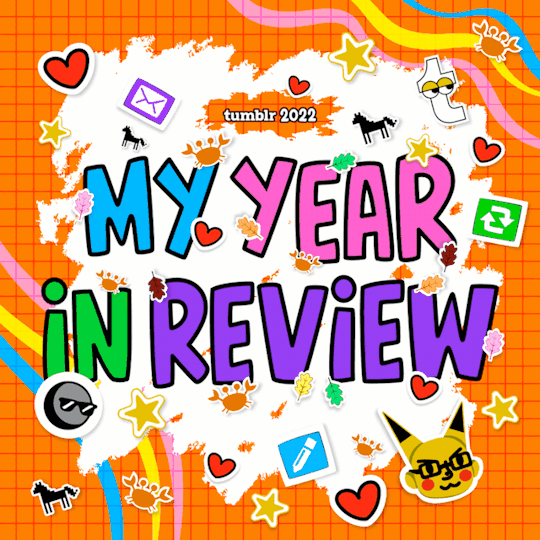
I posted 3,850 times in 2022
7 posts created (0%)
3,843 posts reblogged (100%)
Blogs I reblogged the most:
@maturemenoftvandfilms
@butch-tx-faggot
I tagged 37 of my posts in 2022
#my favorite - 12 posts
#daddy - 10 posts
#love him - 5 posts
#celebrities - 4 posts
#cilf - 3 posts
#handsome daddy - 3 posts
#football - 2 posts
#bruce weber - 2 posts
#pourunhomme - 2 posts
#francois sauvadet - 2 posts
Longest Tag: 23 characters
#anthony norman albanese
My Top Posts in 2022:
#5

Which do you prefer?
4 notes - Posted October 27, 2022
#4
Michael Shumway Lee (born June 4, 1971) is an American lawyer and politician serving as the senior United States senator from Utah. A Republican, Lee has been in the Senate since 2011.
Cute boyish looks. He’s been on my radar for a while, but don’t hear much from him. I lightened up a couple of the photos. Got a nice bulge on him.

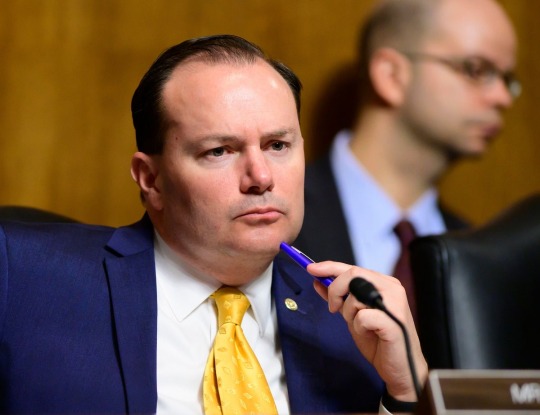
See the full post
5 notes - Posted September 30, 2022
#3

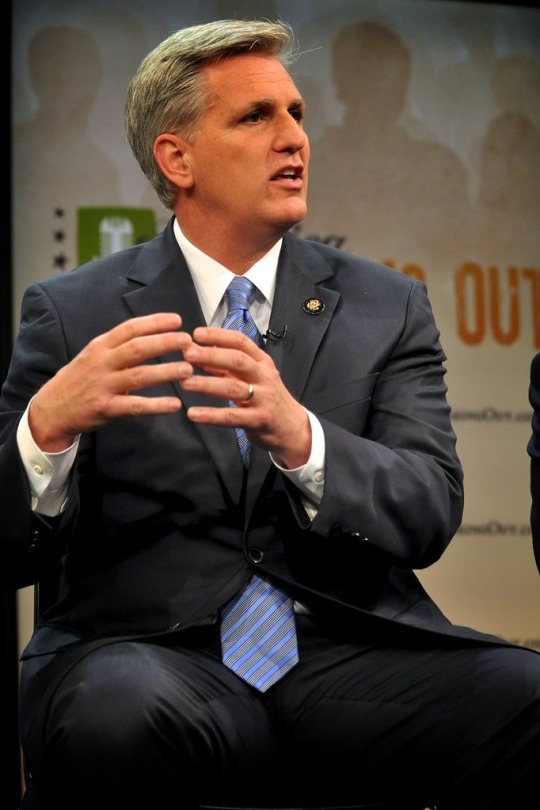
See the full post
10 notes - Posted August 3, 2022
#2
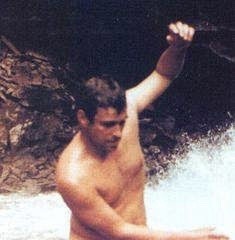
Prince Andrew. For a full view.
https://newtumbl.com/x_nftf86sokPlo
17 notes - Posted August 3, 2022
My #1 post of 2022
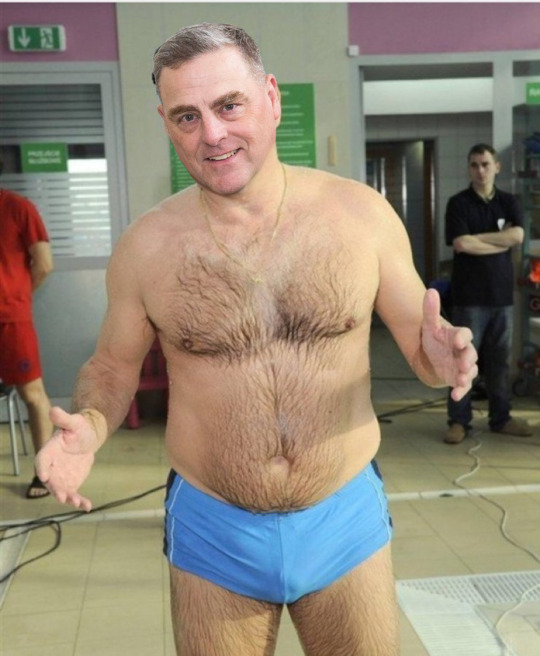
Mark Milley fake.
45 notes - Posted August 8, 2022
Get your Tumblr 2022 Year in Review →
3 notes
·
View notes
Photo










La moda addosso
Grazia Billio
Collaborazione grafica e illustrazioni di Elena Toffaloni e Linda Riva
Acanthus, Milano 1989, 127 pagine, brossura, 27 x 21 cm, ISBN 978-8877690296
euro 18,00
email if you want to buy :[email protected]
Consigli e suggerimenti semiseri per valorizzare la propria immagine e accrescere il proprio fascino. Look da adottare e da mollare, insieme a modi, mode, atteggiamenti, comportamenti, riprovati, comprovati, riprovevoli...
Occhielli liberamente ispirati a Richard Avedon, David Bailey, Giampaolo Barbieri, Guy Bourdin, André Carrara, Clifford Coffin, Marco Glaviano, Frank Horvat, Costantin Joffé, Peter Lindbergh, Barry Lategan, Barry McKinley, Issey Miyake, Norman Parkinson, Irving Penn, Edward Steichen, Xavier Vallhonrat, Albert Watson, Bruce Weber, Moke Yavel

17/12/22
orders to: [email protected]
ordini a: [email protected]
twitter: @fashionbooksmi
instagram: fashionbooksmilano, designbooksmilano tumblr: fashionbooksmilano, designbooksmilano
#La moda addosso#Grazia Billio#looks#Elena Toffaloni#Linda Riva#illustrazione moda#fashion illustration#fashion books#fashionbooksmilano
5 notes
·
View notes
Text
I Read some Beatles Books, AMA
So ever since college, I've had a HUGE problem with like. Reading. I majored in reading and it killed reading. For twenty years. But here's what I've read since January 29 of 2022:
Shout! by Philip Norman
Love Me Do! The Beatles Progress by Michael Braun
150 Glimpses of the Beatles by Craig Brown
The Beatles by Hunter Davies
Many Years from Now by Barry Miles
John: a Biography by Cynthia Lennon
You Never Give Me Your Money by Peter Doggett
Riding So High: The Beatles and Drugs by Joe Goodden
Tune In (the expanded edition) by Mark Lewisohn
currently working on The Beatles and the Historians by Erin Torkelson Weber
Basically my point is, the Beatles cured my inability to read. Ask me anything or tell me what to read next!
6 notes
·
View notes
Text
Birthdays 8.21
Beer Birthdays
Josef Groll (1813)
Christian Diehl (1842)
David "Zambo" Zamborsky
Julian Shrago (1977)
Five Favorite Birthdays
Count Basie; jazz pianist, bandleader (1904)
Aubrey Beardsley; English artist, illustrator (1872)
Friz Freleng; animator (1906)
Joe Strummer; English rock singer, songwriter (1952)
Peter Weir; film director (1944)
Famous Birthdays
Janet Baker; English soprano (1933)
Nikolay Bogolyubov; Russian mathematician and physicist (1909)
Usain Bolt; Jamaican sprinter (1986)
Sergey Brin; Google co-founder (1973)
Bo Burnham; comedian (1990)
James Burton; guitarist (1939)
Dina Carroll; English singer-songwriter (1968)
Kim Cattrall; English-Canadian actor (1956)
Augustin-Louis Cauchy; French mathematician (1789)
Wilt Chamberlain; Philadelphia 76ers C (1936)
Jackie DeShannon; singer (1944)
Addison Farmer; bassist (1928)
Art Farmer; jazz trumpeter (1928)
Hubert Gautier; French mathematician (1660)
Charles Frédéric Gerhardt; French chemist (1816)
Carl Giammarese; singer-songwriter (1947)
Otto Goldschmidt; German composer (1829)
Eric Goles; Chilean mathematician (1951)
Nathaniel Everett Green; English painter and astronomer (1823)
Jean-Baptiste Greuze; French painter (1725)
Stephen Hillenburg; marine biologist and animator (1961)
Patrick Juvet; Swiss singer-songwriter (1950)
Angel Karaliychev; Bulgarian author (1902)
M.M. Kaye; British writer (1908)
X. J. Kennedy; poet (1929)
Ruth Manning-Sanders; Welsh-English author and poet (1886)
Giacomo F. Maraldi; French-Italian astronomer and mathematician (1665)
Patty McCormack; actor (1945)
Jim McMahon; Chicago Bears QB (1959)
Jules Michelet; French historian and philosopher (1798)
Christopher Robin Milne (1920)
Carrie-Anne Moss; Canadian actor (1967)
William Murdoch; Scottish engineer and inventor (1754)
Barry Norman; English author (1933)
William Henry Ogilvie; Scottish-Australian poet and author (1869)
Ozma, Queen of Oz; book character (1904)
Hayden Panettiere; actor (1989)
Frank Perry; film director (1930)
Basil Poledouris; Greek-American composer (1945)
Blossom Rock; actress (1895)
Kenny Rogers; country singer (1938)
Christian Schad; German painter (1894)
Lucius Shepard; author (1943)
Harry Smith; television journalist (1951)
Steve Smith; rock drummer (1954)
Ivan Stang; author (1953)
Jean Stas; Belgian chemist (1813)
Robert Stone; writer (1937)
Jeff Stryker; porn actor (1962)
Melvin Van Peebles; actor (1932)
Pete Weber; bowler (1962)
Clarence Williams III; actor (1939)
Mark Williams; New Zealand-Australian singer-songwriter (1954)
Hugh Wilson; actor and film director (1943)
Alicia Witt; actor (1975)
1 note
·
View note